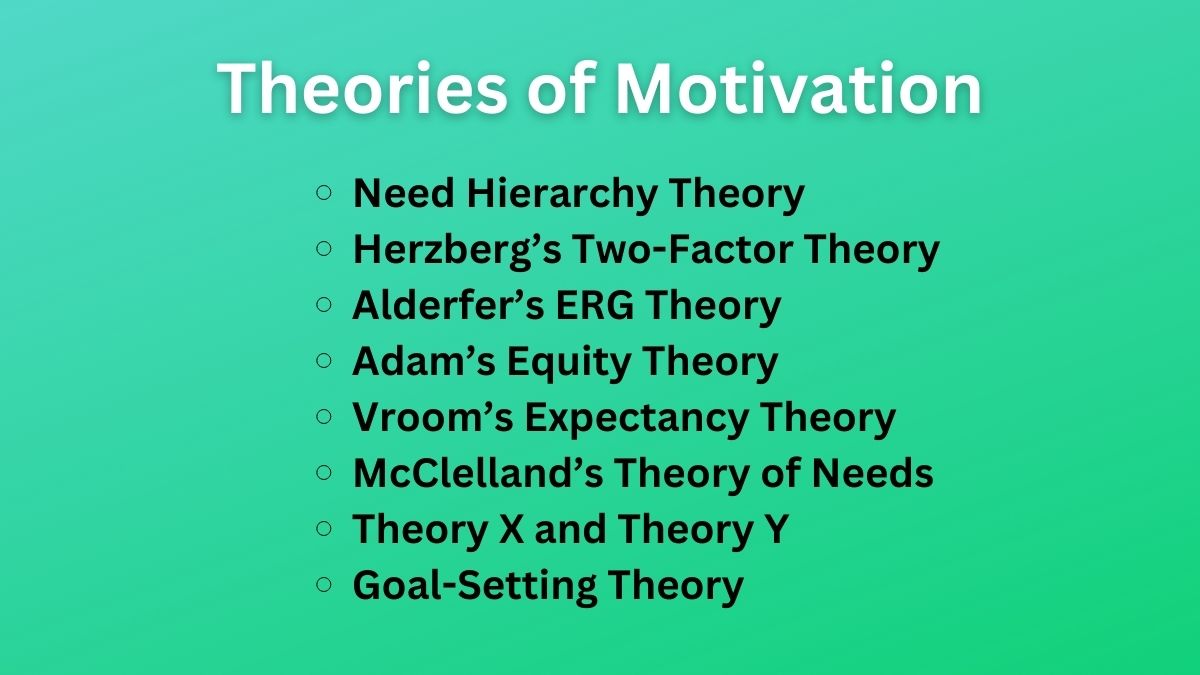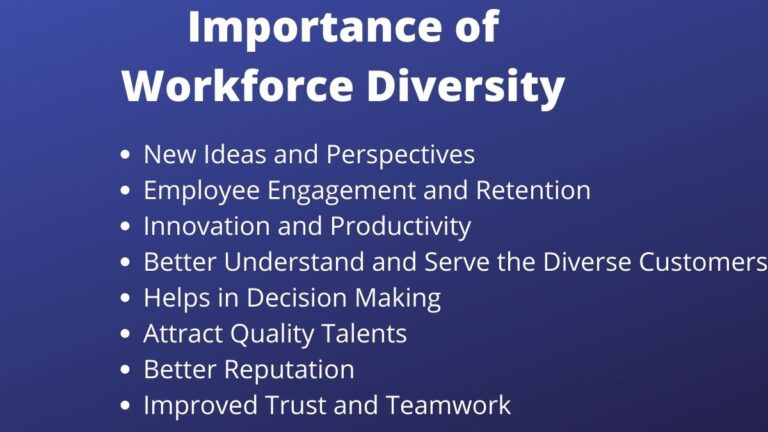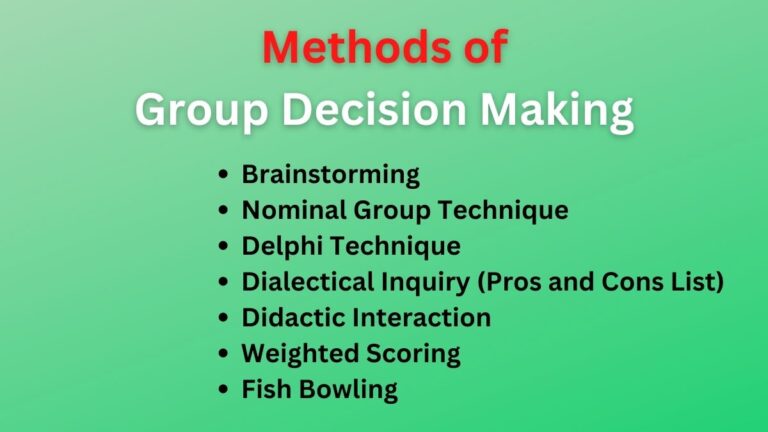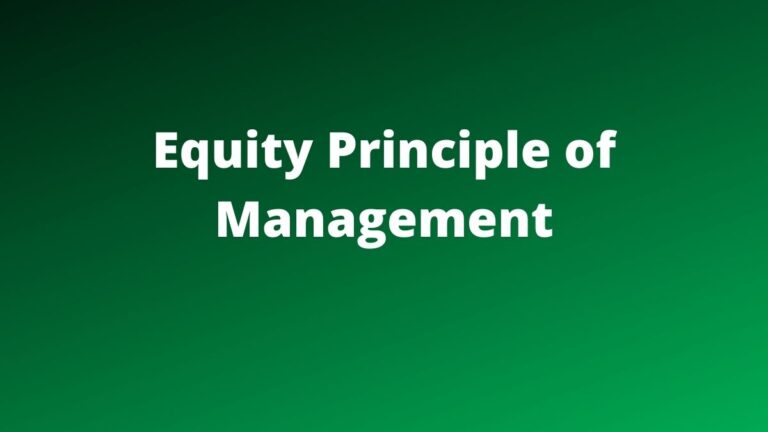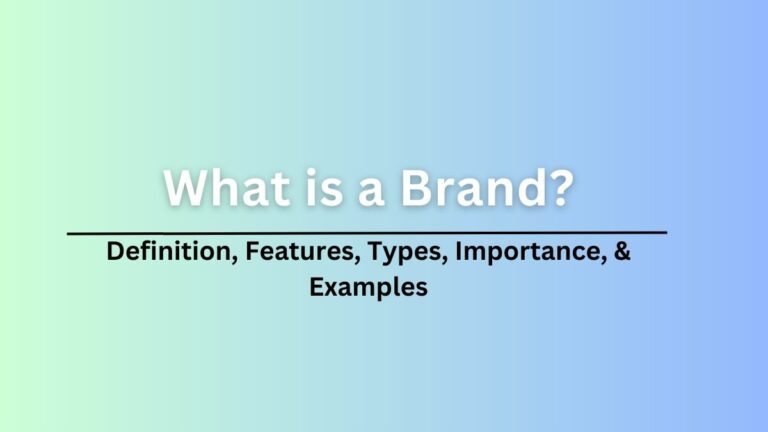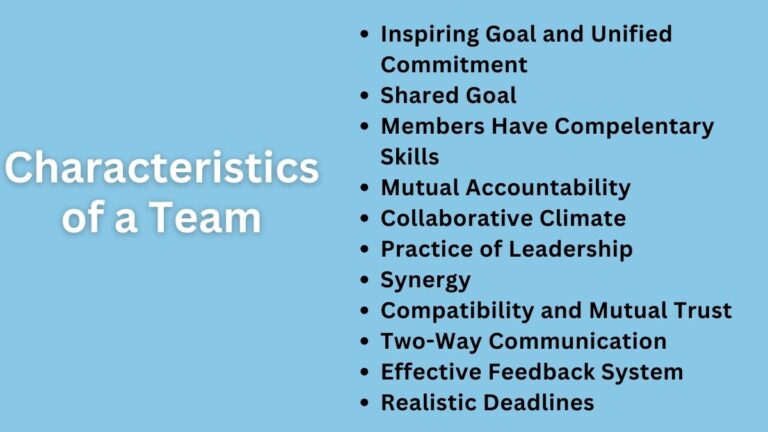8 Most Popular Theories of Motivation [Explained]
Theories of Motivation
Motivation is the drive that pushes people’s behavior toward achieving something. A number of psychologies have studied human behavior and formalized their findings into various motivation theories.
These theories of motivation provide insight into how people get motivated and the factors of their motivation. These theories help to influence people’s behavior in both personal and professional life. The following are the main motivational theories you can use to motivate people or employees in organizations.
Need Hierarchy Theory
Abraham Maslow, a human psychologist is the man behind the development of this need hierarchy theory. He put forward the idea that human needs follow the hierarchy. He focused on human needs and categorized the needs into five and presented them in the hierarchy.
Maslow’s need hierarchy theory is the most popular among the theories of motivation whether in personal or professional life. The five needs he categorized are:
- Physiological Needs – These are the basic needs such as food, shelter, air, sleep, etc.
- Safety Needs – These are the needs of being free from physical danger, and threats, getting job security, secure payment, etc.
- Social Needs – These are love and belongingness needs.
- Esteem Needs – These are the needs for self-respect and recognition.
- Self-Actualization Needs – Needs to reach one’s full potential.
Maslow explained that people have one need at a time. Unless they do not satisfy their basic needs i.e. lower order needs (physiological needs) they do not aim for other higher needs. When people satisfy their physiological needs, the next higher-order need i.e. safety needs emerges in a sequence, and so on.
Herzberg’s Two-Factor Theory
An American Psychologist, Frederick Herzberg proposed a two-factor theory of motivation. This theory explains there are two factors that influence the motivation of people at work. They are hygiene and motivating factors.
Hygiene factors are those factors whose presence does not satisfy the employees but their absence may increase dissatisfaction among employees. Such factors include salary, status, company policies, working conditions, etc.
And, motivating factors are those whose presence has a positive impact on employee motivation. The presence of motivating factors increases the motivation of employees. As such they are also called satisfiers. They include achievement, recognition, the job itself, growth, etc.
Alderfer’s ERG Theory
An American psychologist, Clayton Paul Alderfer proposed the ERG theory of motivation. He developed this theory from Maslow’s theory of need hierarchy. It is a reorganized version of Maslow’s theory.
Alderfer reduced the needs from five to three. He suggested there are three core needs, namely existence needs (E), relatedness needs (R), and growth needs (G).
- Existence Needs – These needs are similar to Maslow’s physiological and safety needs which include food, shelter, air, health, job security, protection from threats, etc.
- Relatedness Needs – These are the needs for affiliation and the importance of maintaining interpersonal relationships. These needs are similar to Maslow’s social needs and esteem needs. Here, esteem needs include gaining respect from others.
- Growth Needs – These are the intrinsic desire of a person to grow optimally. This includes Maslow’s self-actualization such as reaching one’s own full potential and esteem needs which include self-confidence which is intrinsic to a person.
Alderfer explains Maslow’s theory is rigid in nature which explains that needs to follow the hierarchy and people seek to satisfy higher-order needs only after satisfying lower needs. But, Alderfer ignored this, according to him, people can easily go upward and downward in the hierarchy.
Adam’s Equity Theory
According to the equity theory of motivation, individuals—i.e., employees—are motivated when they believe their contributions to the company are recognized properly and that they are appropriately compensated for their contributions. Employees will be more motivated and vice versa the more highly they see fairness in the workplace.
The equity theory of motivation was created by workplace and behavioral psychologist John Stacey Adam. According to him, people seek a proper balance between their inputs (contributions) and their outputs (rewards) from the organization.
Vroom’s Expectancy Theory
According to expectancy theory, a person’s motivation depends on the result or reward they expect from their actions. According to this theory, employees give their best effort when they believe they will receive positive results or rewards, and the opposite is also true.
Victor H. Vroom, a business school professor proposed this theory in 1964, later it was expanded by Porter and Lawler. Vroom explains people’s motivation is the function of expectancy, instrumentality, and valance.
- Expectancy – It is a belief that a particular effort will lead to a particular outcome.
- Instrumentality – It explains the relationship between effort and outcomes. If you hit a certain target you will get a definite reward.
- Valence – It is a value you give to the reward or outcome. People’s valence may be different on the same outcome since it is more personal.
McClelland’s Theory of Needs
David Clarence McClelland proposed the need theory of motivation. He explains there are three emotional needs – power needs, affiliation needs, and achievement needs which influence people’s motivation.
- Need For Power – This refers to the desire to control and influence the behavior of others. People with a high need for power desire to direct and influence people.
- Need For Affiliation – People with a high need for affiliation desire to maintain good interpersonal relationships. They are good at teamwork.
- Need For Achievement – This includes the need for challenge, personal accomplishment, and success in competitive situations. People with a high need for achievement are high achievers.
These are the needs people acquire through their life experiences i.e. they are not inherent when people are born. When we grow, each of us has these three needs to some extent. And, one need is dominant in everyone. And, the dominant need shapes the personality, behavior, and actions of individuals.
Theory X and Theory Y
The motivation theory was created by American management professor Douglas McGregor (1906–1964) and is known as Theory X and Theory Y. On the basis of their personality and attitude, he divided employees into theory Y and theory X groups.
- Theory X – According to McGregor’s theory X, these individuals exhibit bad attitudes about their jobs. They are more motivated by their own interests than those of the organization.
- Theory Y – McGregor’s theory Y consists of people who are characterized by having a positive attitude toward work. They exhibit an increased willingness to do the work because they are self-motivated, happy, and take their responsibilities seriously.
We can conclude that theory Y employees are more crucial to organizational success than theory X employees. Theory X is challenging to manage, while theory Y is simple. These two theories are in conflict with one another. You should as a manager act in accordance with the character and attitude of your Y and X personnel.
Goal-Setting Theory
Last but not least, in our list of motivation theories, the goal-setting theory is the last. This is the theory that explains goal-setting is linked to employees’ task performance.
In 1960, Edwin Locke proposed the goal-setting theory of motivation. And, he stated that specific and challenging goals, along with appropriate feedback, contribute to higher and better task performance.
How To Apply These Motivation Theories?
We have presented a number of motivation theories and applications. While it is always dangerous to synthesize a large number of complex ideas into a few simple guidelines, the following suggestions summarize how these theories can be used to motivate employees in organizations.
Recognize Individual Differences
Employees have different needs. Don’t treat them all alike. Spend the time necessary to understand what is important to all employees. This will allow you to individualize goals, level of involvement, and rewards to align with individual goals.
Use Goals and Feedback
Employees should have challenging goals, specific goals, as well as feedback on how they are doing in pursuit of those goals.
Allow Employees to Participate in Decisions that Affect Them
Employees can contribute to a number of decisions that affect them such as goal setting, choosing their own benefits packages, solving productivity and quality problems, and the like. This can increase employee productivity, commitment to work goals, motivation, and job satisfaction.
Link Rewards to Performance
Rewards should be contingent on performance. Importantly, employees must perceive a clear linkage. Regardless of how closely rewards are actually correlated to performance criteria. If employees perceive this relationship as being low, the result will be low performance, a decrease in job satisfaction, and increases in turnover.
Check the System for Equity
Rewards should also be perceived by employees as equating with the inputs they bring to the job. At a simplistic level, this could mean that experience, skills, abilities, efforts, and other obvious inputs should explain differences in performance, and hence, pay job assignments, and obvious rewards.
Read Next: Communication in the Workplace
Sajan Kushmi is a content writer with more than 4 years of experience. He holds BIM Degree. He write on the topics related to Management, Marketing, and Entrepreneurship.
